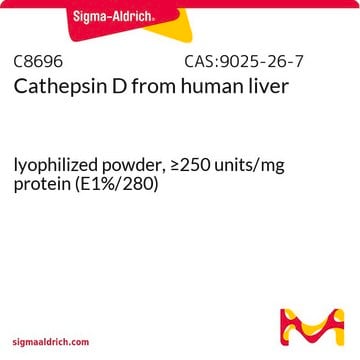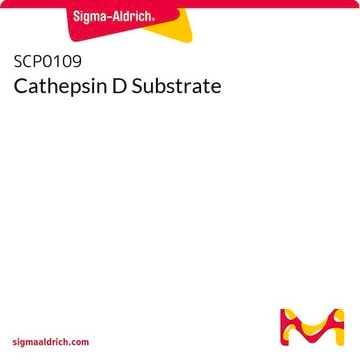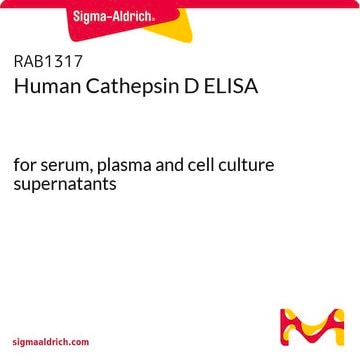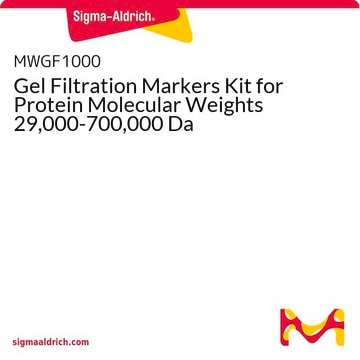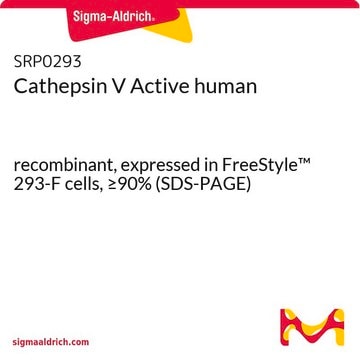SRP6415
Cathepsin D human
recombinant, expressed in HEK 293 cells, ≥95% (SDS-PAGE)
Sinonimo/i:
CLN10, CPSD, CTSD
Scegli un formato
Scegli un formato
About This Item
Prodotti consigliati
Origine biologica
human
Ricombinante
expressed in HEK 293 cells
Tag
6-His tagged (C-terminus)
Saggio
≥95% (SDS-PAGE)
Stato
lyophilized
PM
calculated mol wt 43.6 kDa
observed mol wt 45-55 kDa (DTT-reduced. Protein migrates due to glycosylation. Ser 19 is the predicted N-terminal.)
Confezionamento
pkg of 10 μg
Produttore/marchio commerciale
Sigma-Aldrich
Condizioni di stoccaggio
dry at room temperature
tecniche
activity assay: suitable
Impurezze
<1 EU/μg endotoxin (LAL test)
Compatibilità
suitable for molecular biology
N° accesso UniProt
applicazioni
life science and biopharma
Condizioni di spedizione
wet ice
Temperatura di conservazione
−20°C
Informazioni sul gene
human ... CTSD(1509)
Descrizione generale
Applicazioni
Azioni biochim/fisiol
Stato fisico
Ricostituzione
Codice della classe di stoccaggio
11 - Combustible Solids
Classe di pericolosità dell'acqua (WGK)
WGK 3
Punto d’infiammabilità (°F)
Not applicable
Punto d’infiammabilità (°C)
Not applicable
Scegli una delle versioni più recenti:
Certificati d'analisi (COA)
It looks like we've run into a problem, but you can still download Certificates of Analysis from our Documenti section.
Se ti serve aiuto, non esitare a contattarci Servizio Clienti
Possiedi già questo prodotto?
I documenti relativi ai prodotti acquistati recentemente sono disponibili nell’Archivio dei documenti.
Filtri attivi
Il team dei nostri ricercatori vanta grande esperienza in tutte le aree della ricerca quali Life Science, scienza dei materiali, sintesi chimica, cromatografia, discipline analitiche, ecc..
Contatta l'Assistenza Tecnica.